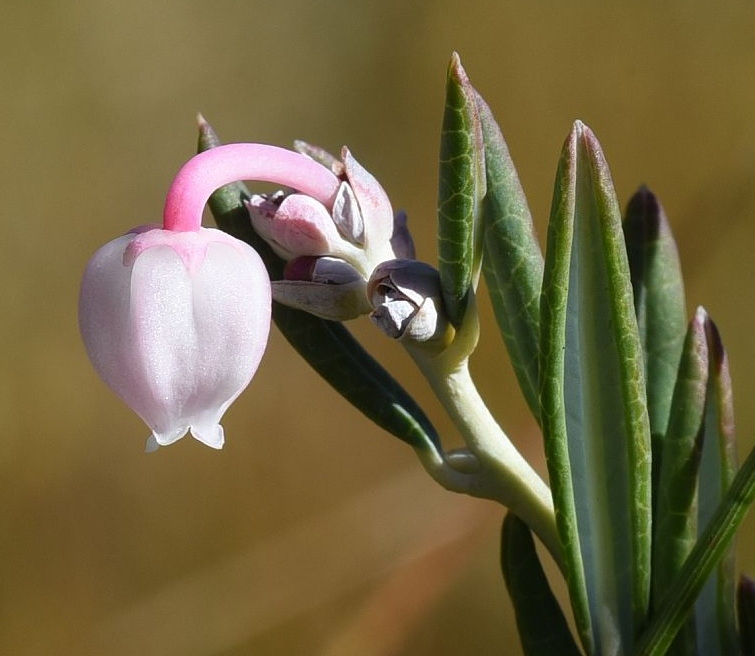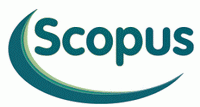COMPARATIVE STUDY OF THE CONTENT OF BIOLOGICALLY ACTIVE SUBSTANCES AND BIOGENIC ELEMENTS IN SOME PLANTS OF THE ERICACEAE FAMILY
UDK 615.322.074:577.19:581.19:582.688.3
Abstract
The quantitative content of water-soluble neutral and acidic polysaccharides, pectin substances, oxidizable substances and the amount of flavonoids in terms of quercetin in six plants of the Ericaceae family was determined: Andromeda polifolia L., Chamaedaphne calyculata (L.) Moench., Chimaphila umbellata, Ledum palustre, Orthilia secunda; Empetrum nigrum. The largest amount of polysaccharides and oxidizable substances was found in the aboveground parts of Orthilia secunda, Chimaphila umbellata and Chamaedaphne calyculata (L.) Moench. More flavonoids, compared with other species, are found in the aboveground parts of Chamaedaphne calyculata (L.) Moench., Andromeda polifolia L. and Empetrum nigrum. The presence of physiologically useful macro and microelements was established by mass spectrometry: calcium, potassium, iron, manganese, zinc, copper, selenium. The content of toxic metals was studied: aluminum, barium, lead and cadmium. It was revealed that the content of heavy metals and barium does not exceed the maximum permissible values. Polysaccharides, amounts of oxidizable substances and flavonoids of the studied species are promising objects for further in-depth chemical and pharmacological study.
Downloads
Metrics
References
Belousov M.V. Farmakognosticheskaya kharakteristika i biologicheskaya aktivnost' predstaviteley semeystva vereskovyye (Ericaceae) flory Sibiri i Dal'nego Vostoka: dis. … dokt. farm. nauk. [Pharmacognostic characteristics and biological activity of representatives of the heather family (Ericaceae) of the flora of Siberia and the Far East: dis. ... doc. pharm. Sci.]. Tomsk, 2004, 310 p. (in Russ.).
Nikolayev N.A., Livzan M.A., Skirdenko Yu.P., Martynov A.I. Biologicheski aktivnyye rasteniya i griby Sibiri v klinicheskoy meditsine v 2 t. [Biologically active plants and fungi of Siberia in clinical medicine in 2 vols.]. Moscow, 2019, vol. 1, 382 p. (in Russ.).
Andreyeva N.V., Malogulova I.Sh. Sovremennyye naukoyemkiye tekhnologii, 2013, no. 9, pp. 51–52. (in Russ.).
Botoyeva Ye.A., Aomboyeva S.S., Burayeva A.B., Chukayev S.A. Baykal'skiy meditsinskiy zhurnal, 2003, no. 1, pp. 69–72. (in Russ.).
Kurennov I.P. Zolotaya entsiklopediya narodnoy meditsiny. [Golden Encyclopedia of Traditional Medicine]. Moscow, 2007, 512 p. (in Russ.).
Barnaulov O.D. Obzory po klinicheskoy farmakologii i lekarstvennoy terapii, 2011, vol. 9, no. 2, pp. 68–74. (in Russ.).
Zhivet'yev M.A., Bybin V.A., Kocherygina Ye.V., Semenova N.V., Putilina T.Ye., Dudareva L.V., Graskova I.A., Markova Yu.A. Khimiya rastitel'nogo syr'ya, 2018, no. 4, pp. 149–157. DOI: 10.14258/jcprm.2018043846. (in Russ.).
Krivykh Ye.A., Kavushevskaya N.S., Gulyayev A.Ye., Kovalenko L.V. Vestnik NovGU. Ser.: Meditsinskiye nauki, 2021, no. 3, pp. 82–89. DOI: 10.34680/2076-8052.2021.3(124).82–89. (in Russ.).
Fursa N.S., Buzuk G.N., Talanov A.A., Ivanov A.P., Kuz'micheva N.A., Gor'kova A.S. Vestnik farmatsii, 2016, no. 3, pp. 59–66. (in Russ.).
Budantsev A.L. Rastitel'nyye resursy Rossii: Dikorastushchiye tsvetkovyye rasteniya, ikh komponentnyy sostav i biologicheskaya aktivnost'. T. 2. Semeystva Actinidaceae – Malvaceae, Euphorbiaceae – Haloragaceae. [Plant re-sources of Russia: Wild flowering plants, their component composition and biological activity. Vol. 2. Families Ac-tinidaceae – Malvaceae, Euphorbiaceae – Haloragaceae]. St. Petersburg; Moscow, 2009, 513 p. (in Russ.).
Pachaly P., Klein M. Planta Med., 1987, vol. 53, pp. 442–444. DOI: 10.1055/s-2006-962769.
Dampc A., Luczkiewicz M. Fitoterapia, 2013, vol. 85, pp. 130–143. DOI: 10.1016/j.fitote.2013.01.013.
Ali U., Khan M.M., Khan N., Haya R.T., Asghar M.U., Abbasi B.H. Phytochem Rev., 2023, vol. 8, pp. 1–16. DOI: 10.1007/s11101-023-09880-1.
Gosudarstvennaya farmakopeya Rossiyskoy Federatsii. XIV izd. [State Pharmacopoeia of the Russian Federation. XIV ed.]. Moscow, 2018, vol. 2. URL: https://docs.rucml.ru/feml/pharma/v14/vol2/.(in Russ.).
Gosudarstvennaya farmakopeya Rossiyskoy Federatsii. XIV izd. [State Pharmacopoeia of the Russian Federation. XIV ed.]. Moscow, 2018, vol. 4. URL: https://docs.rucml.ru/feml/pharma/v14/vol4/.(in Russ.).
Harborne J.B., Williams C.A. Bot. J. Linn. Soc., 1973, vol. 66, pp. 37–54.
Racz G., Furi I. Acta pharm. hung., 1959, vol. 29, no. 2, pp. 64–70.
Martynova M.O., Kozyrev K.M., Albegova Zh.K. Sovremennyye problemy nauki i obrazovaniya, 2014, no. 2. URL: https://science-education.ru/ru/article/view?id=12441. (in Russ.).
Kabata-Pendias A., Pendias X. Mikroelementy v pochvakh i rasteniyakh. [Microelements in soils and plants]. Moscow, 1989, 439 p. (in Russ.).
Murashkina I.A., Mirovich V.M., Gordeyeva V.V., Chebykin Ye.P. Vestnik Voronezhskogo gosudarstvennogo universiteta. Seriya: Khimiya. Biologiya. Farmatsiya, 2019, no. 4, pp. 53–59. (in Russ.).

Copyright (c) 2024 chemistry of plant raw material

This work is licensed under a Creative Commons Attribution 4.0 International License.

This work is licensed under a Creative Commons Attribution 4.0 International License.
The authors, which are published in this journal, agree to the following conditions:
1. Authors retain the copyright to the work and transfer to the journal the right of the first publication along with the work, at the same time licensing it under the terms of the Creative Commons Attribution License, which allows others to distribute this work with the obligatory indication of the authorship of this work and a link to the original publication in this journal .
2. The authors retain the right to enter into separate, additional contractual agreements for the non-exclusive distribution of the version of the work published by this journal (for example, to place it in the university depository or to publish it in a book), with reference to the original publication in this journal.
3. Authors are allowed to post their work on the Internet (for example, in a university repository or on their personal website) before and during the review process of this journal, as this may lead to a productive discussion, as well as more links to this published work.











